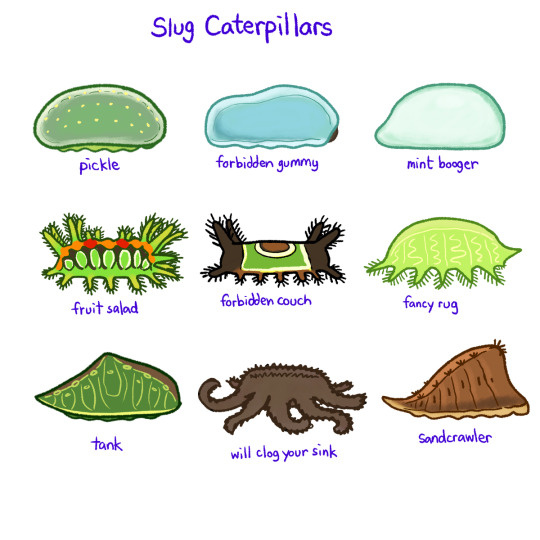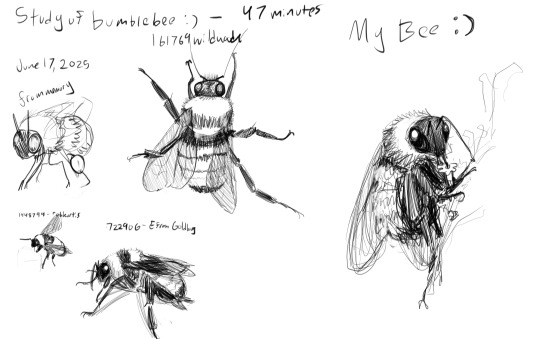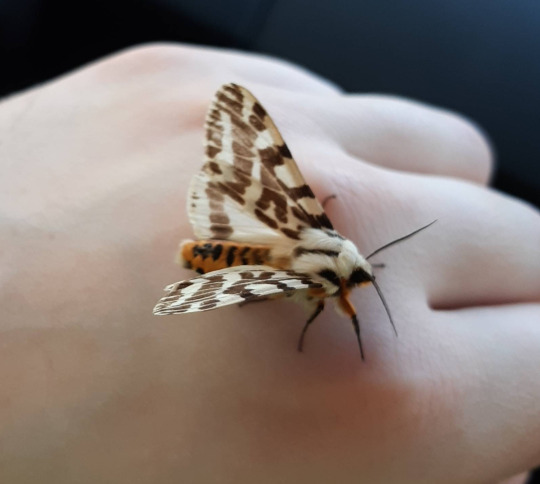AUTISTIC HERMIT,LOVER OF ARTHROPODS, FISHING AND FISH! occasional plush posting. He/they/it pronouns. reblogs three times a day,every day. if you recognize me here hiii oomf. banner by @ketrinadrawsalot and idk who took the pic
Don't wanna be here? Send us removal request.
Text
grasshoppers piss me off because what

2K notes
·
View notes
Text
here is the albino earthworm I found today! it does not look like much at first glance, because there are many earthworms that are normally unpigmented and look much like this one.

but take a closer look at the head and you’ll see that the prostomium—the little lobe that comes off the first segment—is tanylobous, having creases until segment 2. that means it’s genus Lumbricus, which are all usually a dark reddish color!

here is the albino meeting another juvenile, a Lumbricus terrestris. I’m unsure if the albino is L. terrestris or rubellus, and will need to wait for it to grow up to be able to tell.

no matter what it is, it’s a privilege to see and raise this little oddity, I will keep you all updated on its progress!
3K notes
·
View notes
Text
Fish of the Day
Today's fish of the day is the necklace carpetshark!

The necklace carpetshark, also known by the name varied carpetshark, and scientific name Parascyllium variolatum, is one of the best known carpet sharks in the genus Parascyllium. The scientific name draws from the latin word for spotted, referring to the white spots surrounding the body. Other than the Latin scientific name, this shark is known by many English names other than the two previously listed. In Australia, it is often referred to as: ring-neck catshark, or southern catshark. Despite sharing many features with catsharks, or ground sharks as they are sometimes referred, the Parascyllium genus nor the Parascylliidae family it resides in is considered catsharks, and this is why these names are often not used in classification.

Regardless of the naming structure, let's get into the location of this fish! Found around the coasts of Australia from 37 degrees South to 41 degrees South, around inshore waters. These sharks are known for their demersal lifestyle, living along the seabed. Living at a depth of 180 meters or higher the necklace carpetshark spends its nights over rocky coral reefs, kelp or seagrass beds, or sandy floors. During the day however, this shark shelters primarily in caves, although it can be found in camouflage along the seabed on rare occasions. This has led to these sharks being rarely seen by those not actively looking for them.

Necklace carpet sharks, like many of their relatives, possess a slender elongated body. With a maximum length of 91cm with most adults ranging 60cm-91, these sharks can be differentiated from their family members by the broad black markings that cover the gills, small spiracles, and smaller mouth than most. Their mouths possess 28 teeth along the top jaw, and 32 teeth along the lower. Their prey is primarily made up of shellfish along the seabed, which is caught as these sharks lunge at them from behind. These sharks are little predated on in adulthood, but on the rare occurrences, it is done by larger fish, sharks, or marine mammals in the area. Although, other than this eggs cases are often fed on by certain seasnails.

The reproduction of the necklace carpetshark is similar to that of its family. As an oviparous shark, eggs are laid outside of the mother, where they are then left to fend for their own to hatch, and then throughout its youth. Inside the mother, embryos feed on the yolk of its egg sack. Outside the mother, 2-3 eggs will be laid at a time with eggs being covered in 2-3 tendrils, which will anchor them to the sea bed, often during the summer months. After being laid, eggs will hatch within 12-39 days, with many of the juveniles being predated on per season. Eventually, once these sharks have gotten larger than 60cm, they are considered adults and develop sex characteristics, eventually going on to breed and lay their own offspring. Currently there are no known threats to the necklace carpet shark populations.

That's the necklace carpetshark! I hope everyone had a wonderful time reading about them!
571 notes
·
View notes
Text

This only scratches the surface of how weird slug caterpillars (Limacodidae) are
4K notes
·
View notes
Text
bees
i drawiwng beessss

these are my bumbple beeeeeeeeeeeeeeeeeeeeeeeeeeeees
31 notes
·
View notes
Text

A Baltic sea trout prepares a spawning pit. Filmed on Bornholm, Denmark. From Sea in Motion - Hidden Worlds of the Baltic (2023).
213 notes
·
View notes
Text

fish go blub blub
obligatory allegory on how chronically online i am (~9hrs……………..)
10000000% creativity boost from the peak songs in my playlist while drawing
hell yeah i love cardiac contrepoint
25 notes
·
View notes
Text
Giant Malaysian Katydid is a species of carnivorous giant katydid. It is one of the largest insects in the world.This is its sound 😮
6K notes
·
View notes


















